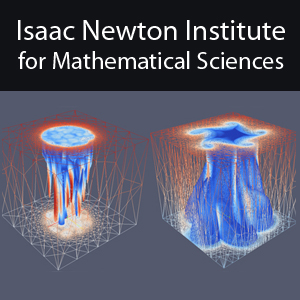A Three-Dimensional Finite-Volume Nonhydrostatic Icosahedral Modle (NIM)
Duration: 24 mins 21 secs
Share this media item:
Embed this media item:
Embed this media item:
About this item

| Description: |
Jin Lee, (National Oceanic and Atmosphere Administration)
Thursday 27 September 2012, 11:35-12:00 |
|---|
| Created: | 2012-10-02 09:23 |
|---|---|
| Collection: | Multiscale Numerics for the Atmosphere and Ocean |
| Publisher: | Isaac Newton Institute |
| Copyright: | Jin Lee |
| Language: | eng (English) |
| Abstract: | The Nonhydrostatic Icosahedral Model (NIM) formulates the latest numerical innovation of the three-dimensional finite-volume control volume on the quasi-uniform icosahedral grid suitable for ultra-high resolution simulations. NIM’s modeling goal is to improve numerical accuracy for weather and climate simulations as well as to utilize the state-of-art computing architecture such as massive parallel CPUs and GPUs to deliver routine high-resolution forecasts in timely manner. NIM uses innovations in model formulation similar to its hydrostatic version of the Flow-following Icosahedral Model (FIM) developed by Earth System Research Laboratory (ESRL) which has been tested and accepted for future use by the National Weather Service as part of their operational global prediction ensemble. Innovations from the FIM used in the NIM include:
* A local coordinate system remapped spherical surface to plane for numerical accuracy (Lee and MacDonald, 2009), * Grid points in a table-driven horizontal loop that allow any horizontal point sequence (A.E. MacDonald, et al., 2010), * Flux-Corrected Transport formulated on finite-volume operators to maintain conservative positive definite transport (J.-L, Lee, ET. Al., 2010), * All differentials evaluated as finite-volume integrals around the cells, *Icosahedral grid optimization (Wang and Lee, 2011) NIM extends the two-dimensional finite-volume operators used in FIM into the three-dimensional finite-volume solvers designed to improve pressure gradient calculation and orographic precipitation over complex terrain. The NIM dynamical core has been successfully verified with various non-hydrostatic benchmark test cases such as warm bubble, density current, internal gravity wave, and mountain waves. Physical parameterizations have been incorporated into the NIM dynamic core and successfully tested with multimonth aqua-planet simulations. |
|---|---|
Available Formats
| Format | Quality | Bitrate | Size | |||
|---|---|---|---|---|---|---|
| MPEG-4 Video | 640x360 | 1.84 Mbits/sec | 337.66 MB | View | Download | |
| WebM | 640x360 | 1.6 Mbits/sec | 292.35 MB | View | Download | |
| Flash Video | 484x272 | 568.39 kbits/sec | 101.37 MB | View | Download | |
| iPod Video | 480x270 | 506.08 kbits/sec | 90.26 MB | View | Download | |
| MP3 | 44100 Hz | 125.06 kbits/sec | 22.17 MB | Listen | Download | |
| Auto * | (Allows browser to choose a format it supports) | |||||

